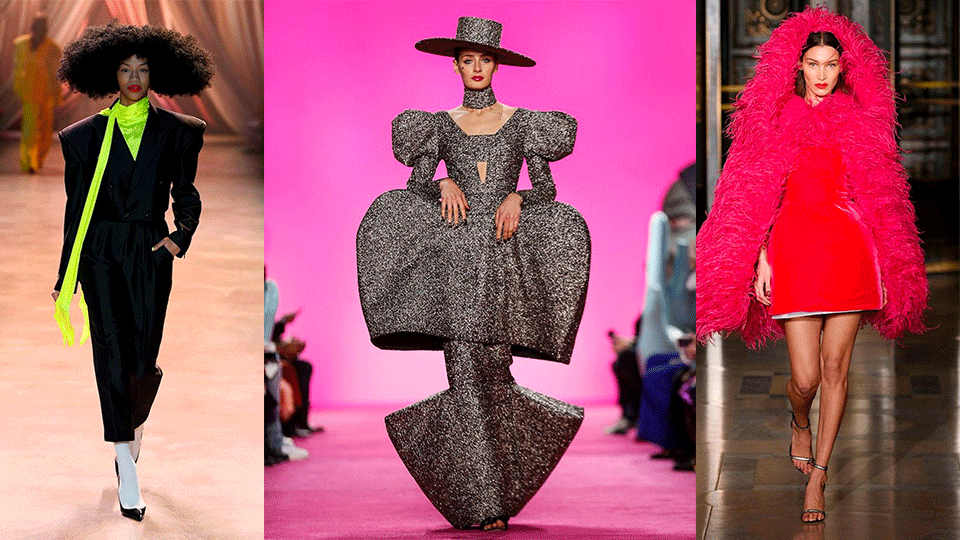- À New Wave to Fashion, À New Way of Living. Download Now on iOS Android Canada SS22
- hello@alahausse.ca
The Fashion Rental Take-Over: Will the fashion rental model be mass adopted?

Basic and Not-so-Basic Fashion Rules Every Fashion Lover Should Know
August 11, 2021
What brand loyalty looks like in 2021: how brands need to step it up to ensure repeat customers
August 11, 2021
Written by Chantel Ong
A general amount of 254 million tons of waste are generated per year — which mainly comes from the fashion industry, with millions of textiles and pieces thrown out annually. This contemporary society’s wear-it-once culture has become another phenomenon that encourages consumers to adopt that fast fashion pace of the industry. One of the growing factors of this phenomenon is because of the ever growing social media platforms that make content consumable. Forcing users to think that their outfits should always be different on their feed, when re-wearing an outfit has been done for centuries. However, we don’t have to be discouraged, an alternative to consumption could be renting.
Renting clothing has been in the market for quite a while, however it isn’t as commercial compared to online shopping, or window shopping. Although not entirely eco-friendly because of dry-cleaning and shipping. It is a much better alternative than buying a prom dress once and never wearing it again. Renting compared to buying, and lending compared to discarding, will reduce a huge amount of waste and extend the current garment life, reducing several forms of carbon footprint.
Rental Industry's Growth
Jennifer Hyman states: “”When you buy in a store a blouse for $20 that will soon fall to pieces, that’s actually a form of rental.” Several brands through their marketing tactics taught consumers to buy disposable fashion. As the vintage / thrifting business has entered this form of consumption. Their main target market are those “ok” with the idea of clothes that have been worn. Which is why there has been a mass trend of curated vintage shops, depop, ThredUp, and many more.
Which is why several big to small brands have been steadily looking out for the rental market. For example, brands like Ralph Lauren and Ganni that are dabbling in the revenue-share program through Rent the Runway Platform. Several designers as well have collaborated with rental programs in creating their own collections through the platform.
InstantLuxe deployed a rental service in November 2017, initially limited to leather goods. Later on as their site was launched vintage clothing garnered great attention. According to the CEO of InstantLuxe, people would rent the product to test it out, then eventually buy the product. Making consumers think differently, seeing the product more as an investment than an impulsive buy. As that time to rent provides consumers to think whether this product is worth keeping long-term.


The Rental Market
According to MarketWatch, special events such as weddings and parties have the highest market share (over 40%) in 2018 for the rental industry. Mainly because of the strong e-commerce background and marketing on social media. The remaining “other” apparel has a market share of about 38% in 2018. This increasing growth is based on the subscription of companies to online rental. As Millennials and Generation Z are living in a more fast-paced environment, demanding more results and actions, clothing rental has become another way for an individual to be cost effective. Since not everyone has the time and money to buy a $200 dress for one event. Formal and business wear segment also hold a good amount of market share in the rental fashion industry (about 22%) which is usually used for business formal events, and business meetings.
As MarketWatch says, the global online clothing rental market has reached about a value of US $1.26 Billion in 2019. It is forecasted to reach a value of US $2.08 Billion by 2025, with a CAGR of 8.7% during 2020-2025.
Several factors have contributed to the current growth of the rental market. The online community is one of the main factors for the current growth of the rental industry. Especially with Gen Z holding buying power, as they are more fashion and eco-conscious. In addition, Millennials have adopted the trend of wearing designer clothes without actually owning them.
Designer Places to Rent
1. Rent the Runway
Mainly used for occasion-specific renting With a variety of collections from different designers such as Rebecca Minkoff, Elizabeth & James, Cynthia Rowell and many more starting at $30.
2. Style Lend
Can browse through unique designer items that are curated by New York stylists. Which can be delivered in two to three days in NYC and kept for seven days.
3. The Devout
Users receive clothes every month, without harming the planet. WIth five other items delivered, including cleaning and insurance, then swap for five more the following month. Sending five items in one go reduces the cost of packaging and sending individual pieces.
4. By Rotation
An online rental store that showcases their product in their app, offering panel discussion, workshops and sustainability masterclasses. They also have pop-ups to showcase their collection.

5. OnLoan
Onloan with a shared aim to reduce waste and champion independent designers. The service makes much-loved brands like Shrimps and Joseph more accessible and cost-effective to their customers.
The Verdict
Bay Garnet who introduced the thrift market to Selfridges for their charity “Second hand September” has seen the shift in consumer attitude to the phenomenon. Especially with this pandemic, it becomes discouraging to buy when marketing aims at us to buy what they are wearing. Nobody wants to be forced into something. According to Shepherdson, he sees a huge future for rental fashion. As more brands want to come and trade since they see the shift.
The rental fashion industry will slowly but surely create waves in the fashion industry. Helping one reduce the current problem of fast consumption.
Via ÀLA.HAUSSE‘s Multi-functional and Multi-purposeful Fashion Ecosystem- BUY/SELL/RENT/LEND/ (swap BETA 2021) mobile application, INDIVIDUALS & brands ( BETA 2021) are encouraged to REBUY, RESELL, REUSE and UP-CYCLE their personal “Clossets” aka Clothing Assets, along with overstock inventory and samples. Through this consumerism habit shift we indirectly slow down the urgency on fashion’s carbon footprint, aiding sustainability as a whole.
BETA Early Access Application Now Open for CA Fashion Lovers: Apply Now for LAST CALL
with Stories on www.alahausse.ca
#ALAHAUSSE #WEARYOURPURPOSE #HAUSSEPEOPLE
References:
- https://www.thegoodtrade.com/features/7-places-to-rent-designer-dresses-and-clothing-online
- https://www.glossy.co/fashion/fashion-brands-are-developing-deeper-relationships-with-rental-platforms/
- https://uk.fashionnetwork.com/news/Is-renting-the-future-for-fashion-and-luxury-,962146.html
- https://www.marketwatch.com/press-release/global-online-clothing-rental-market-outlook-industry-analysis-and-prospect-2021-2021-04-21?tesla=y








